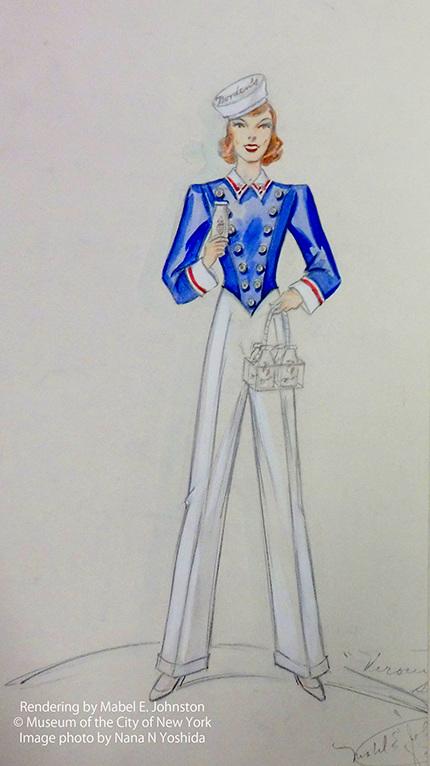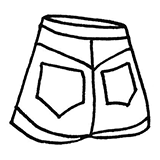I don’t remember ever having Borden products. Ever since I arrived in NYC in the 1990s, the image of Borden products to me has been comparable to Hostess Twinkies, Snapple, YooHoo, or I Can’t Believe It’s Butter—the American food companies that have accomplished their fame through branding, not necessarily for taste. Just because Borden products had colorful flashy packaging, I always presumed that their products used tons of additives and that their taste would disappoint me.
Visual images have always been one of the most important aspects of marketing. I remember seeing Elsie the Cow logos in stores without knowing the name “Borden.” Between 2001 and 2003, when flashy logos were popular among the street fashion trendsetters in NYC, people wore random logos and patches on their clothes. That’s when those American brands’ flashy logos were especially hot. And, Elsie was one of them.
I did’t dare to consume those products with flashy packages, but I used to wear them. I had a lip gloss in a Twinkie-shaped container as a necklace charm. I also had Reese’s peanut-butter-cup-shaped mirror as a bag charm. In the summer time, I carried a clear pocketbook showing what was inside. Among them was a bag of real rainbow Twizzlers that I had never ever eaten in my life.
However, somewhere down the road when choosing organic foods and being health conscious became a big deal around 2005, my eyes gradually started to ignore those flashy brands subconsciously at the supermarket. In fact, many of the grocery stores in my gentrifying neighborhood started to have a much smaller sections for those colorful products. Therefore, I’d forgotten all about Elsie the Cow until I worked at the Museum of the City of New York as the Research Diversity Fellow in 2018.
Discovering Borden’s branding history
As the Research Fellow at the Costumes and the Textiles Department and Theater Collection, I conducted research on nearly 400 renderings drawn by costume designers between the 1910s and 1930s in New York City. One of the prominent designers of that time, Mabel E. Johnston, left a few costume renderings with the Borden brand theme.

Though none of those renderings had Elsie the Cow on it, the brand name “Borden” and the milk jar made it clear that the designs were for the Borden milk company. I was very curious about these costumes. Conducting research on these particular renderings was not part of my assignments during my several-month-long fellowship term. So, I did not get to find out much about them—not that I would have been able to solve the mystery had I had more time for it.


Costumes designed for Borden Company in the 1920s
I wondered how Johnston came to create these costumes for the Borden brand. Were they for the company’s promotional campaign? Were they for the company’s private party? Or were they designed for a show?
In the 1920s, Mabel E. Johnston designed numerous costumes for shows. She was selected as the costume designer for the Broadway shows such as Earl Carroll’s Vanity and George M Cohan’s Merry Malone. Sometimes her designs were selected, and other times they weren’t. She had also designed for Lee and Jacob J. Shubert’s The Passing Show though it’s not known if her designs were selected. Whether her designs were selected or not, she certainly had created many magnificent designs that reflected the trends of the time.
And these Borden-themed costumes are just a small portion of the numerous renderings she had left for us in the current era. These Borden costumes were designed sometime in the 1920s. According to the Borden website, the New York Condensed Milk Company changed its name to Borden Company in 1919, and it quickly became the biggest milk company in the U.S. That means that these costumes were designed during Borden’s golden age.
The renderings had a written description of the costumes, and the name “Veronica.” It is unclear if the costumes were worn by a showgirl (or a client) named Veronica, or if it was designed for the show titled “Veronica.” This was about a decade before Elsie the Cow was introduced in 1936.
When Elsie the Cow was becoming popular
As for Johnston in the mid-1930s, she seemed to have focused more on fashion designs instead of costume designs. I found out about this fact by examining her renderings at the Museum. By the late 1930s, Johnston had designed more sophisticated made-to-order clothes for private wealthy clients. This was when Elsie the Cow was becoming popular in American Mass media.
Borden’s recent filing of Chapter 11 bankruptcy
When I saw the news on Borden company’s bankruptcy, it prompted me to dig my files to find the photos and records of my discovery about the company. I had an urge to share these with you all. If it wasn’t for that, all of these records along with the photos would have been kept as part of my personal diaries.
